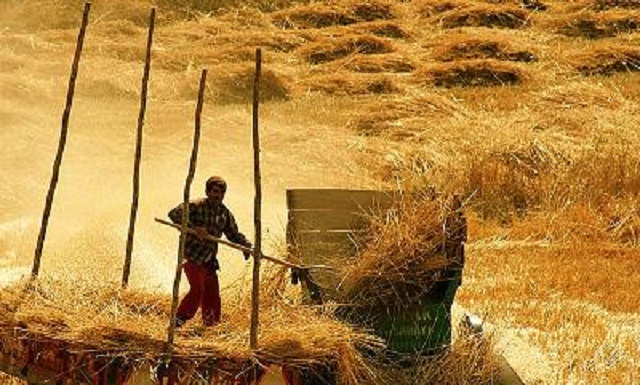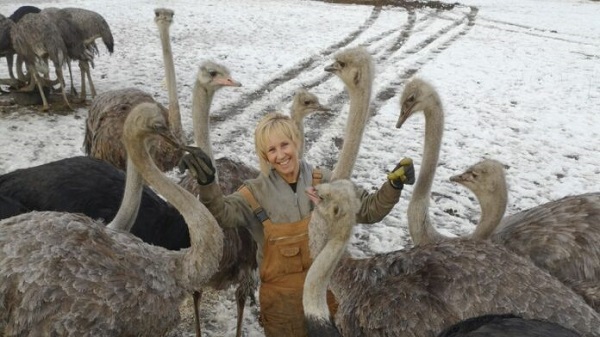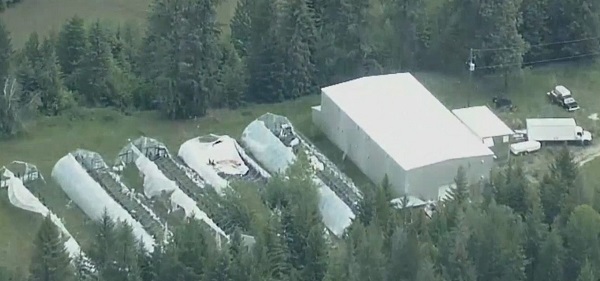Agriculture
Diesel won’t be easily replaced on the farm

From the Frontier Centre for Public Policy
By Brian Zinchuk, contributor to the Frontier Centre for Public Policy.
I was out at the cabin, trying to trim the reeds and weeds along the water, when I came across a stark reminder of how good we have it because of fossil fuels.
I was using the electric whipper snipper when the reel head decided to disassemble itself. But I still had a lot of weeds that needed to be cut.
So I went into the shed and dug out the old scythe Uncle Larry, the previous owner, put in there some time in the preceding 40 years. That scythe likely dates back to the 1930s, making it somewhere around 90 years old. A blacksmith hand-made that scythe.
I took a palm sander to it and put a usable edge on it.
My late grandfather, Harry Zinchuk, showed me how to use a scythe some 30 years ago, when I was around 18. I think he used one when he was 18, around 1935, twisting right to left. My technique was awful, my tool old and probably too dull. But I was able cut down about 40 square feet of reeds in a few sweat soaked minutes.
And with each stroke, I kept wondering how entire teams of men would go into the fields, slicing down crops entirely by hand. It would take days for them to do 160 acres.
It made me think of farming today. A few years ago I was hired to video and photograph a year on the farm for Jason and Sherrill LeBlanc of Estevan. They had their then 14-year-old daughter driving a mammoth Case combine, and doing so well. I wonder how much more productive one girl driving a combine was compared to teams of men with scythes, then stookers (a person who bends over and picks up the loose wheat that had been cut down), then threshing crews.
That same farm now continuously crops over 100 quarters (16,000 acres) of land, harvesting with a crew of around 20 people. They usually accomplish all of that in just a few weeks.
My grandfather worked on those threshing crews, from sun up to sun down. Lard sandwiches were his fuel. Hay fed the horses. How much more efficient are diesel combines now?
For some real-world explanations of this, I strongly encourage reading some of the books by Vaclav Smil, the University of Manitoba distinguished professor emeritus whose prolific writings on energy are a true wake-up call. Last summer I got through How the World Really Works: The Science Behind How We Got Here and Where We’re Going. Other titles of his I hope to get through are Energy and Civilization: A History, Invention and Innovation: A Brief History of Hype and Failure and Power Density: A Key to Understanding Energy Sources and Uses. The general thrust is how mankind’s mastery of energy supplies have allowed us to live the lives we currently enjoy.
Some people seem to think we can easily replace diesel with electric when it comes to farm equipment. One of those people is Canada’s Minister of Natural Resources Jonathan Wilkinson. I was present when he was in Kipling, Saskatchewan, on June 29, to announced $50 million for a wind power project. A local reporter asked him about electric tractors.
Focusing on cost of operations for farmers with regards to the Clean Fuel Regulations, the reporter noted, “That’s going to make life harder for them because, you know, the bottom line is there is no such thing in Saskatchewan right now as an [electric] tractor. You know, it’s just not feasible. And so, as they’re making this transition, what sort of investment is the federal government prepared to get to that?”
Wilkinson replied, “I think the first thing that you said about it’s just not feasible, people would have said exactly the same thing about an electric vehicle 10 years ago, and they would have said the same thing about an electric pickup truck. And now those are available to buy them. There are companies that are working on large scale equipment, including equipment for farming, that will be electric on a go-forward basis. So those kinds of solutions are actually driven by regulations like this. But what I would say is, and I do say, that this will create jobs and economic opportunity, including in the agricultural sector, because you use canola, and soy, and often agricultural residuals to make the products that are going to be driven by this whole thing. So, there are benefits associated with it.”
Electric tractors, eh? Just how large batteries will they require? Will they be the size of an air seeder tank, and pulled behind like a coal tender from locomotives of old? Do you need two, with someone towing one out to the field after charging, to allow continual operations?
Because that’s what farmers do these days. Jason’s seeding crew has their turnarounds to fuel, service, and refill the seeder with seed and fertilizer down to 18 minutes. They run shifts around the clock, many miles from home. And they have two mammoth Case 620 Quadtrac tractors doing so, plus an older tractor pulling a land roller, as well as two sprayers. Where and when are they supposed to charge up? How long will that take their equipment out of operation?
Are they just supposed to find the nearest power pole and hook up some big booster cables?
Farming requires enormous amounts of energy – a lot more than a lard sandwich or EV charger. And diesel is the answer, and will be for a long time to come. Sorry, Mr. Minister. Electric tractors won’t be cutting it anytime soon.
Brian Zinchuk is editor and owner of Pipeline Online, and occasional contributor to the Frontier Centre for Public Policy. He can be reached at [email protected].
Agriculture
Canada Greenlights Mass Culling of 400 Research Ostriches Despite Full Recovery from Bird Flu Months Ago

 Nicolas Hulscher, MPH
Nicolas Hulscher, MPH
Federal court upholds CFIA’s reckless cull order—setting a dangerous precedent for the unscientific mass depopulation of genetically important animals.
In March, I interviewed Katie Pasitney of Universal Ostrich and Connie Shields to discuss the alarming implications of the Canadian Food Inspection Agency (CFIA) order to cull 400 research ostriches at Universal Ostrich Farm in British Columbia over bird flu:
Canada Orders Mass Culling of 400 Research Ostriches Over Bird Flu, Refuses to Test Surviving Birds for Natural Immunity
·The Canadian Food Inspection Agency (CFIA) has ordered the culling of 400 ostriches at Universal Ostrich Farm in British Columbia, citing concerns over H5N1 bird flu. However, this decision is not based on sound science and could have serious consequences for both food security and medical research.
Universal Ostrich Farm is a research facility focused on studying the unique antibody-producing capabilities of ostriches. Their research has demonstrated potential in neutralizing viruses, bacteria, and even COVID-19, making it an important contribution to medical science.
In December 2024, the CFIA claimed that two deceased ostriches—which had been lying outside for over 16 hours—tested positive for H5N1 via PCR testing. Just 41 minutes after receiving these results, the CFIA signed an order to cull the entire flock.
The CFIA initially granted the farm an exemption, recognizing the birds as “genetically important.” Later, without clear justification, they reversed this decision, ordering their destruction.
Despite the importance of this research, the CFIA has refused to conduct further testing on the birds and has banned the farm from conducting its own tests, under threat of heavy fines and possible imprisonment. Why is the Canadian government refusing to study the potential antibodies ostriches have developed against H5N1 bird flu?
On January 31, 2025, a court granted a temporary stay of execution, halting the cull. However, the CFIA is appealing this decision, which means the culling could still proceed.
Today, we have received news that the reckless mass cull order will proceed despite their ostriches having already recovered months ago and developed natural immunity against H5N1:

Official Announcement: Federal Court Decision in Universal Ostrich Farms Inc. v. Canadian Food Inspection Agency
Dear friends and supporters,
We are absolutely devastated to share today’s Federal Court decision, issued on May 13, 2025. The court ruled in favour of the Canadian Food Inspection Agency (CFIA), upholding their order to destroy our beloved ostriches and rejecting our plea to save them.
The court’s decision accepted the CFIA’s justification under the Health of Animals Act and their use of the Stamping-Out Policy, which mandates the destruction of animals to control disease outbreaks, regardless of their health status. The court confirmed the CFIA’s approach, prioritizing trade obligations over the welfare of our animals.
In addition, we’ve been ordered to pay $15,000 in CFIA’s legal costs. You can read the full decision here: (2025 FC 878). https://saveourostriches.com/wp-content/uploads/2025/05/JR-T-294-25-and-T-432-25-Final.pdf
We are heartbroken by this outcome and uncertain about the future of our farm. As we navigate this incredibly difficult time, we ask for your patience and continued support. If you are able, please consider making a donation to help us manage the financial and emotional toll this has taken.
Thank you,
Universal Ostrich Farm
http://SaveOurOstriches.com
This deeply misguided decision sets a dangerous precedent for the Canadian government to recklessly depopulate animals at will.
By upholding the CFIA’s reckless cull order, despite the ostriches’ recovery and natural immunity, the court has prioritized trade protocols over scientific inquiry, animal welfare, and the advancement of life-saving medical research.
Epidemiologist and Foundation Administrator, McCullough Foundation
www.mcculloughfnd.org
Please consider following both the McCullough Foundation and my personal account on X (formerly Twitter) for further content.
Agriculture
Canada is missing out on the global milk boom

This article supplied by Troy Media.
 By Sylvain Charlebois
By Sylvain Charlebois
With world demand soaring, Canada’s dairy system keeps milk producers locked out of growth, and consumers stuck with high prices
Prime Minister Mark Carney is no Justin Trudeau. While the team around him may be familiar, the tone has clearly shifted. His first week in office signalled a more data-driven, technocratic approach, grounded in pragmatism rather than ideology. That’s welcome news, especially for Canada’s agri-food sector, which has long been overlooked.
Historically, the Liberal party has governed with an urban-centric lens, often sidelining agriculture. That must change. Carney’s pledge to eliminate all interprovincial trade barriers by July 1 was encouraging but whether this includes long-standing obstacles in the agri-food sector remains to be seen. Supply-managed sectors, particularly dairy, remain heavily protected by a tangle of provincially administered quotas (part of Canada’s supply management system, which controls prices and limits production through quotas and tariffs to protect domestic producers). These measures stifle innovation, limit flexibility and distort national productivity.
Consider dairy. Quebec produces nearly 40 per cent of Canada’s milk, despite accounting for just over 20 per cent of the population. This regional imbalance undermines one of supply management’s original promises: preserving dairy farms across the country. Yet protectionism hasn’t preserved diversity—it has accelerated consolidation.
In reality, the number of dairy farms continues to decline, with roughly 90 per cent now concentrated in just a few provinces. On our current path, Canada is projected to lose nearly half of its remaining dairy farms by 2030. Consolidation disproportionately benefits Quebec and Ontario at the expense of smaller producers in the Prairies and Atlantic Canada.
Carney must put dairy reform back on the table, regardless of campaign promises. The sector represents just one per cent of Canada’s GDP, yet
wields outsized influence on policy, benefiting fewer than 9,000 farms out of more than 175,000 nationwide. This is not sustainable. Many Canadian producers are eager to grow, trade and compete globally but are held back by a system designed to insulate rather than enable.
It’s also time to decouple dairy from poultry and eggs. Though also supply managed, those sectors operate with far more vertical integration and
competitiveness. Industrial milk prices in Canada are nearly double those in the United States, undermining both our domestic processors and consumer affordability. These high prices don’t just affect farmers—they directly impact Canadian consumers, who pay more for milk, cheese and other dairy products than many of their international counterparts.
The upcoming renegotiation of CUSMA—the Canada-United States-Mexico Agreement, which replaced NAFTA—is a chance to reset. Rather than resist change, the dairy sector should seize the opportunity to modernize. This includes exploring a more open quota system for export markets. Reforms could also involve a complete overhaul of the Canadian Dairy Commission to increase transparency around pricing. Canadians deserve to know how much milk is wasted each year—estimated at up to a billion litres—and whether a strategic reserve for powdered milk, much like our existing butter reserve, would better serve national food security.
Global milk demand is rising. According to The Dairy News, the world could face a shortage of 30 million tonnes by 2030, three times Canada’s current annual production. Yet under current policy, Canada is not positioned to contribute meaningfully to meeting that demand. The domestic focus on protecting margins and internal price fairness is blinding the sector to broader market realities.
We’ve been here before. The last time CUSMA was renegotiated, Canada offered modest concessions to foreign competitors and then overcompensated its dairy sector for hypothetical losses. This created an overcapitalized industry, inflated farmland prices and diverted attention from more pressing trade and diplomacy challenges, particularly with India and China. This time must be different: structural reform—not compensation—should be the goal.
If Carney is serious about rebooting the Canadian economy, agri-food must be part of the conversation. But that also means the agriculture sector must engage. Industry voices across the country need to call on dairy to evolve, embrace change and step into the 21st century.
Dr. Sylvain Charlebois is a Canadian professor and researcher in food distribution and policy. He is senior director of the Agri-Food Analytics Lab at Dalhousie University and co-host of The Food Professor Podcast. He is frequently cited in the media for his insights on food prices, agricultural trends, and the global food supply chain.
Troy Media empowers Canadian community news outlets by providing independent, insightful analysis and commentary. Our mission is to support local media in helping Canadians stay informed and engaged by delivering reliable content that strengthens community connections and deepens understanding across the country.











